The ancient city of Alexandria was founded in 332-331 BC by Alexander the Great. From it’s inception it was intended to be an important port for Egypt, for it would serve as a link between Egypt and the civilizations around the Mediterranean Sea. Up to the time of Alexander the Great, Egypt lacked permanent, suitable harbors on its northern coast. Most Egyptian - Mediterranean trade passed up the Nile River or through landing-places located on the mouths of various branches of the Nile Delta. The best known of these were the Canopus and Pelusium, but they were of a temporary nature at best. These shallow landing spots were at the mercy of the Nile flood and its annual silt deposits. Every few years they had to be rebuilt as the silt accumulated. The only permanent Egyptian harbor on the Mediterranean was the one on the island of Pharos, which had no direct access to the mainland. (Hecateus of Abdera, Diod.I.31; Eratosthenes, Strabo 17.1.19)
Alexander the Great set up a committee to advise him on the best choice for an appropriate site for his new port city. Among his advisers were: Cleomenes of Naukratis, the prominent businessman and engineer; Deinokrates of Rhodes, the famous civic engineer; Numenius, the stone-mason and his brother Hyponomos. These men demonstrated an expertise and thorough knowledge of the geographical layout of northern Arabia as well as of the climatic and marine conditions along the coast. They chose a site on the west side of the Nile Delta that would make the best use of the western and northern winds and the west-to-east sea current. They decided to also build a causeway (later on known as the Heptastadium) to connect the island of Pharos with the mainland at Rakotis. In this way, two harbors were created at the same time. The main Portus Magnus was to the east of the causeway and the smaller port of Eunostos was to the west. Within the Eunostos, close to the Heptastadium, a structure known as the Kibotos (box) was carved out. Reaching south to Lake Mariout through a navigable canal, it functioned as a lock to connect the open sea with the lake. The lake was then connected to the Nile River by canals. In this way, an extra harbor was also established on the lake-side of Alexandria. (Strabo, 17.1.7) Through this complex system of harbors and canals, maritime shipping at Alexandria was linked to the inland waterways of Egypt, thereby greatly increasing the possibilities of transport and trade. According to Ps. Call, it was on the advice of Hyponomos, the brother of Numenius, the stone-mason that a network of channels and drains running into the sea were constructed. ‘Such canals were called Hyponomos after him.
During Alexander’s lifetime, several developments took place which confirmed the function of Alexandria as a major trade centre. From the very beginning, Alexander instructed his finance minister, Cleomenes of Naukratis, to transfer the emporium (trade-centre) of Canopus (present-day Abu Qir) to Alexandria. (Ps. Arist. Oec. II.33 c.) Cleomenes took full advantage of his important position and immediately established a monopoly of international trade in grain throughout the Mediterranean with Alexandria as his base. In addition to this, he provided the city with a mint as early as 326 BC. Thus Alexandria’s position as an international trading centre was assured. (M. El-Abbadi, ‘Cleomenes’, Bull. Fac. of Arts, Alexandria 17 (1964) 65-85 in Arabic)
Later, under the direction of the Ptolemies, the city’s commercial significance advanced by leaps and bounds and it soon became the worldwide center for foreign merchants and businessmen. Nabataean merchants were among the first of many merchants that used Alexandria as their principle port of trading. They soon abandoned their activities from the port at Gaza in favor of the new Egyptian port. In fact, given time and world events, the Nabataean Empire soon channeled almost all of their southern and eastern trade through Alexandria. This trade soon became so large, that Nabataean merchants began to settle in Alexandria, and function as key citizens of the city. Many of them were completely Hellenized and took on Greek names and adopted much of the Greek culture. They were not totally Hellenized, as they maintained many of their Nabataean burial practices. The Catacombs of Kom-El-Shoqafa (Hill of Tiles) can be visited to date. Discovered in 1900, they are of special importance since they are pretty much intact and date back to the second century BC. Here in these catacombs people ate commemorative meals to the dead and smashed their dishes, much as they did in front of Nabataean tombs throughout the Middle East. As these wealthy Nabataean merchants set up their businesses, the Egyptian government reacted to take advantage of their presence.
A papyrus, dated October 258 BC, has preserved a prostagma (royal ordinance) of Ptolemy II Philadelphus (308-246 BC, Reign 285-246) establishing control on foreign currency entering the country, which ordained that ‘all foreign merchants were required to exchange their gold and silver for new Ptolemaic silver coins, in order to make their purchases in Alexandria and the rest of the country.’ Furthermore, in the same document, we find a certain Demetrios, who was in charge of the Alexandrian mint, complaining of the difficulties the mint faced to cope with the exchanges required. (P. Cairo Zenon 59021. cf. Cl. Preaux, Économie Royale des Lagides, 271, n.2.). It is obvious that the amount of foreign gold and silver brought in exceeded the capacity of the Alexandria mint. This situation reflects the great foreign demand on the supplies of the markets in Alexandria and Egypt around the middle of the third century BC.
Alexandria had a tremendous impact on the Nabataean Empire. Not only was it the focal point of Nabataean trade, but Alexandrian architecture and culture was soon evident throughout the Nabataean Empire.
Third Century Building of the City and the Great Wonders
The design of the city of Alexandria itself by the Greek architect Dinocrates, was not creative, yet it was practical. Like most ancient Greek cities, the plan consisted of orhtogonal streets, with the sea being the main landscaping element. The main street, the Canopic (now Fouad Street) connected the Gate of the Moon to the West with the Gate of the Sun to the East. It then extended eastward, along a possibly ancient road, up to Canopus (now Abou Qir). Orhtogonal to the Canopic, was the Street of the Soma (now Nebi Daniel Street). The intersection known as the Soma was the city center, and is believed to be Alexander’s burial place.
The Heptastadion (seven stades long) dyke (mentioned earlier) was built to connect the Island of Pharos with Alexandria. Initially, it was merely a narrow structure, but later silted and formed the land area, today occupied by Mansheya neighborhood.
Upon Alexander’s death, no single successor emerged to claim his kingdom. Rather, the widespread territories were divided among several rulers. Egypt was the share of the most skilled of these: Ptolemy. He was Macedonian by birth, but witnessed the birth of Alexandria and wanted her to be the cultural and intellectual capital of the world. He ruled in 323 BC, reigned in 304 BC, and expanded his kingdom to include Cyrene (Lybia), Palestine, Cyprus, and others lands. His royal titles included King Soter (Savior), and Pharaoh. Under the reign of Soter, the golden age of Alexandria, the new capital of Egypt, started.
His successor, Ptolemy II Philadelphus (King in 287 BC), was different. Unlike his father, he turned his back on military campaigns and focused on building Alexandria as a city and a world trade center. He was more “Egyptian” than his father and thus married his sister Arsinoe, a custom, then widely accepted among Egyptians but despicable in the eyes of the Greeks.
His son, Ptolemy III Euergetes (Well-doer), was full of will and motivation. He reigned in 246 BC, and was praised as a military leader and a supporter of science. He married his cousin Berenice. Their reign marked the peak in Alexandria’s glamour and fame. Ptolemy III was followed by a line of rulers, but the Ptolemaic Dynasty ended in 30 BC, when Cleopatra lost the famous battle of Actium in the Adriatic. Egypt then became a Roman province, under the rule of Octavian.
Alexandria thrived during the reign of the first three Ptolemies and grew into one of the largest, if not the largest metropolis in the world and became the world’s scientific and intellectual center. The legacy of the Ptolemies is highlighted by major achievements. The Pharos Lighthouse was built; the Mouseion/Great Library system was founded; the Palace was constructed; the Heptastadion Dyke was completed; and the Temple of Serapis was erected. It was in this illustrious city that was also the focal point of the Nabataean Empire and Nabataean traders brought exotic trade items to Alexandria’s markets from the far corners of the world.
One of the greatest achievements of the Ptolemies was the building of The Great Library of Alexandria, so called to distinguish it from the smaller or “daughter” library in the Serapeum. These were initially founded for the purpose collecting all the known wisdom of the world into one location. In time the libraries themselves the focal point for promoting and aiding Greek civilization and thought in the midst of the conservative Egyptian setting.
It is felt that at least the plan for this institution must have been formed under Ptolemaios Soter (died c. 284 B.C.), but the completion of the work and its connection with the Museum was achievement of his successor, Ptolemaios Philadelphos. As Strabo does not mention the library in his description of the buildings upon entering the harbor, it is clear that it was not in that part of the city, and its connection with the Museum points to a location in the Brucheion, or northwestern quarter of the city.
The first known mention of the library at Alexandria is in The Letter of Aristeas (ca. 180-145 BC), by a Jewish scholar housed at the Library chronicling the translation of the Septuagint into Greek by seventy-two rabbis. This massive production was commissioned by the Athenian exile Demetrius of Phaleron under his patron, Ptolemy I, Ptolemy Soter. Demetrius himself was a former ruler, no less than a ten-year tyrant of Athens, and a first-generation Peripatetic scholar. That is, he was one of the students of Aristotle along with Theophrastus and Alexander the Great. Demetrius, helped into power in Athens by Alexander’s successor Cassander, provided backing for Theophrastus to found a Lyceum devoted to his master’s studies and modeled after Plato’s Academy. After Ptolemy I Soter, on of Alexander’s successful generals, secured the kingship for himself of conquered Egypt, Theophrastus turned down the Pharoah’s invitation in 297 B.C.E to tutor Ptolemy’s heir, and instead recommended Demetrius, who had recently been driven out from Athens as a result of political fallout from the conflicts of Alexander’s successors (Diog. Laert. 5.37)
According to Aristeas, Demetrius recommended Ptolemy gather a collection of books on kingship and ruling in the style of Plato’s philosopher-kings, and furthermore to gather books of all the world’s people that he might better understand subjects and trade partners. Demetrius must also have helped inspire the founding of a Museum in Ptolemy’s capital, Alexandria, a temple dedicated to the Muses. This was not the first such temple dedicated to the divine patrons of arts and sciences. However, coming as it did in the half-century after the establishment of Plato’s Academy, Aristotle’s Lyceum, Zeno’s Stoa and the school of Epicurus, and located in a rich center of international trade and cultural exchange, the place and time were ripe for such an institution to flower. Scholars were invited there to carry out the Peripatetic activities of observation and deduction in math, medicine, astronomy, and geometry; and most of the western world’s discoveries were recorded and debated there for the next 500 years.
Aristeas, writing 100 years after the library’s inception, records that Ptolemy I handed over to Demetrius the job of gathering books and scrolls, as well as letting him supervise a massive effort to translate other cultures’ works into Greek. This process began with the translation of the Septuagint, the Old Testament, into Greek, for which project Ptolemy hired and housed 72 rabbis at Demetrius’ suggestion. (Letter of Aristeas 9-10).
At the time of Demetrius, Greek libraries were usually collections of manuscripts by private individuals, such as Aristotle’s Library of his own and other works. Egypt’s temples often had shelves containing an assortment of religious and official texts, as did certain Museums in the Greek world. It was Ptolemy I’s great ambition to possess all known world literature that created the idea of creating a true library. John Tzetzes records several centuries later that Callimachus cataloged 400,000 “mixed” scrolls (probably those that contained more than one chapter, work, or even author) and 90,000 “unmixed”, plus an additional 42,000 in the Serapeum. Ptolemy’s successors’ methods for achieving his goal were certainly unique. Ptolemy III wrote a letter “to all the world’s sovereigns” asking to borrow their books (Galen 17.1 Kühn p. 601ff). When Athens lent him the texts to Euripides, Aeschylus, and Sophocles, he had them copied, returned the copies, and kept the originals. Supposedly, all ships that stopped in the port of Alexandria were searched for books which were given them same treatment, thus the term “ship libraries” for the collection housed in the Museum. This unorthodox procedure did at least inspire the first systematic work in emendation and collation of classical texts without which none of the authors would have survived.
The official copy of the works of the three great tragedians belonging to Athens was retained by forfeiting the deposit of 15 talents that had been paid towards their return. The rivalry between Alexandria and Pergamon was so keen that to cripple the latter the exportation of papyrus from Egypt to Pergamon was prohibited. Since papyrus was in such demand, scribes perfected new methods of preparing skins to receive writing. This new material became known as charta pergamena, from which we derived our word parchment. This rivalry between the libraries at Pergamon and Alexandria gave occasion for the composition of many spurious works. New devices were also invented to give manuscripts a false appearance of antiquity. Other manuscripts contained errors due to hasty and careless copying, for anyone with a good looking manuscript could get a sale in both Alexandria and Pergamon.
Ancient historians differ in the total number of books that were obtained. Demetrius Phalereus is said to have reported that the number of papyrus rolls was 200,000, but that he hoped to increase it soon to 500,000. In the time of Callimachos 490,000 rolls are mentioned; later, Aulus Gellius and Ammianus Marcellinus speak of 700,000 rolls. Orosius, on the other hand, speaks only of 400,000, while Seneca says that 40,000 rolls were burnt (probably an error for 400,000).
The physical shelves of the Library may have been in one of the outlying lecture halls or in the garden, or it may have been housed in the Great Hall. They consisted of pigeonholes or racks for the scrolls, the best of which were wrapped in linen or leather jackets. Parchment skins, vellum, came into vogue after Alexandria stopped exporting papyrus in an attempt to strangle its younger rival library, set up by the Seleucids in Pergamon. In Roman times, manuscripts started to be written in codex (book) form, and began to be stored in wooden chests called armaria .
The Museum
Archaeologists have not uncovered the foundations of the Museum to date, although they have excavated portions of the “daughter Library” in the nearby temple of Serapis. From scattered primary sources this much seems relatively clear: it was in the Brucchium (northeast) sector of the city, probably in or adjacent to the palace grounds. It was surrounded by courts, gardens, and a zoological park containing exotic animals from far-flung parts of the Alexandrian empire. According to Strabo (17.1.8), at its heart was a Great Hall and a circular domed dining hall with an observatory in its upper terrace; classrooms surrounded it. This is very similar to the layout of the Serapeum, which was begun by Ptolemy II Philadelphus and completed by his son. An estimated 30-50 scholars were probably permanently housed there, probably fed and funded first by the royal family, and later, according to an early Roman papyrus, by public money.
While Demetrius made the plan for the library, was a convert of Serapis and thus probably an official of the new Greco-Egyptian cult invented by Ptolemy, the Library was not yet built at his death and he is remembered neither as librarian of that institution nor at the Museum. The first recorded Librarian was Zenodotus of Ephesus, who held the post from the end of Ptolemy I’s reign until 245 BC His successor Callimachus of Cyrene was perhaps Alexandria’s most famous librarian, creating for the first time a subject catalog in 120,000 scrolls of the Library’s holdings, called the Pinakes or Tables. It was by no means comprehensive, but was more like a good subject index. Apollonius of Rhodes, his younger rival and the writer of the notoriously meticulous epic, Argonautica, seems to have been Callimachus’ replacement. Eratosthenes of Cyrene, Stoic geographer and mathematician, succeeded him in 235, and compiled his “tetagmenos epi teis megaleis bibliothekeis”, the “scheme of the great bookshelves”. In 195 Aristophanes, a Homeric scholar of no relation to the comic playwright, took up the position, and updated Callimachus’ Pinakes. The last recorded librarian was Aristarchus of Samothrace, the astronomer, who took up the position in 180 BC and was driven out during dynastic struggles between two Ptolemies. While the library and Museum persisted for many centuries afterwards, from that time onward scholars are simply recorded as Alexandrian, and no Librarians are mentioned by name.
While it is doubtful the library had a perfectly systematic organization, but rather tended to house new chests and shelves of papyri in the groups in which they were acquired, the Alexandrians from Callimachus onwards tried to keep track of their holdings via a subject catalog. In this they followed Aristotle’s divisions of knowledge, or at least his style of breaking up what had previously fallen under the umbrella of “philosophy” into subdivisions of observational and deductive sciences. The subject divisions first set forth by Callimachus in his Pinakes, were made up of mathematics, medicine, astronomy, and geometry, as well as philology. These divisions are discussed below:
Mathematics
Alexandrian mathematicians concerned themselves for the most part with geometry, but we know of some researches specific to number theory. Prime numbers were a source of fascination from the time of the Pythagoreans onwards. Eratosthenes the Librarian dabbled in numbers along with everything else, and is reported to have invented the sieve, a method for finding new ones Euclid also was known to have studied this tricky subject. Eudoxis of Cnidus, Euclid’s pupil, probably worked out of Alexandria, and is known for developing an early method of integration, studied the uses of proportions for problem solving, and contributed various formulas for measuring three dimensional figures. Pappus, a fourth century A.D. scholar, was one of the last of the Greek mathematicians and concentrated on large numbers and constructions in semicircles, and he was also an important transmitter into European culture of astrology gleaned from eastern sources. Theon and his daughter Hypatia also continued work in astronomy, geometry, and mathematics, commenting on their predecessors, but none of their works survives to this date.
Astronomy
Astronomy was not merely the projection of three-dimensional geometry into a fourth dimension, time, although this is how many Greek scientists classified it. The movements of the stars and sun were essential for determining terrestrial positions, since they provided universal points of reference. In Egypt, this was particularly vital for property rights, because the yearly flooding of the Nile often altered physical landmarks and boundaries between fields. For Alexandria, whose lifeblood was export of grain and papyrus to the rest of the Mediterranean, developments in astronomy allowed sailors to do away with consultation of oracles, and to risk year-round navigation out of sight of the coast. Earlier Greek astronomers had concentrated on theoretical models of the universe; Alexandrians now took up the task of detailed observations and mathematical systems to develop and buttress existing ideas. It was this knowledge of astronomy and navigation that allowed Nabataean merchants based out of Alexandria to travel to the far corners of the world.
Maps of Heaven
Eratosthenes, the versatile third librarian, amassed a poetic catalog of 44 constellations complete with background myths, as well as a list of 475 fixed stars. Hipparchus was credited with bringing together theories of longitude and latitude, importing the 360-degree circular system from Babylonia, calculating the length of a year within six minutes accuracy, amassing sky-chart of constellations and stars, and speculated that stars might have both births and deaths.
Schemes of the Universe
Aristarchus applied Alexandrian trigonometry to estimate the distances and sizes of the sun and moon, and also postulated a heliocentric universe. A fellow Museum scholar, the Stoic Cleanthus, accused him of blatant impiety. Hipparchus of Bithynia, during the reign of Ptolemy VII, discovered and measured the procession of the equinoxes, the size and trajectory of the sun, and the moon’s path. 300 years later Ptolemy the Geographer worked out mathematically his elegant system of epicycles to support the geocentric, Aristotelian view, and wrote a treatise on astrology, both of which were to become the accepted medieval paradigm.
Geometry
The Alexandrians compiled and set down many of the geometric principles of earlier Greek mathematicians, and also had access to Babylonian and Egyptian knowledge on that subject. This is one of the areas in which the Museum excelled, producing its share of great geometers, right from its inception. Demetrius of Phaleron is said to have invited the scholar Euclid to Alexandria, and his Elements are well-known to be the foundation of geometry for many centuries. His successors, notably Apollonius of the second century BC, carried on his research in conics, as did Hipparchus in the second century A.D. Archimedes is credited with the discovery of pi.
Eratosthenes and Spherical Geometry: Calculating the Earth’s circumference
The third librarian of Alexandria, Eratosthenes (275-194 BC), calculated the circumference of the earth to within 1%, based on the measured distance from Aswan to Alexandria and the fraction of the whole arc determined by differing shadow-lengths at noon in those two locations. He further suggested that the seas were connected, that Africa might be circumnavigated, and that “India could be reached by sailing westward from Spain.” Finally, probably drawing on Egyptian and Near Eastern observations, he deduced the length of the year to 365 1⁄4 days and first suggested the idea of adding a “leap day” every four years.
Mechanics: Applied Science
Archimedes was one of the early Alexandria-affiliated scholars to apply geometers’ and astronomers’ theories of motion to mechanical devices. Among his discoveries were the lever and the “Archimedes screw,” a hand cranked device for lifting water. He is also presented as the original person who arose from his bath tub with the cry of “Eureka” after discovering that water is displaced by physical objects immersed in it.
Hydraulics was an Alexandria-born science which was the principle behind Hero’s Pneumatics, a long work detailing many machines and “robots” simulating human actions. The distinction between practical and fanciful probably did not occur to him in his thought-experiments, which included statues that poured libations, mixed drinks, drank, and sang (via compressed air). He also invented a windmill-driven pipe organ, a steam boiler which was later adapted for Roman baths, a self-trimming lamp, and the candelaria, in which the heat of candle-flames caused a hoop from which were suspended small figures to spin. His sometimes whimsical application of the infant sciences are reminiscent of the modern Rube Goldberg’s “inventions” during the technological revolution of this century.
Medicine
The study of anatomy, tracing its roots to Aristotle was conducted extensively by many Alexandrians, who may have taken advantage both of the zoological gardens for animal specimens, and Egyptian burial practices and craft for human anatomy. One of its first scholars, Herophilus, both collected and compiled the Hippocratic corpus, and embarked on studies of his own. He first distinguished the brain and nervous system as a unit, as well as the function of the heart, the circulation of blood, and probably several other anatomical features. His successor Eristratos concentrated on the digestive system and the effects of nutrition, and postulated that nutrition as well as nerves and brain influenced mental diseases. Finally, in the second century AD, Galen drew upon Alexandria’s vast researches and his own investigations to compile fifteen books on anatomy and the art of medicine.
The Museum of Alexandria was founded at a unique place and time which allowed its scholars to draw on the deductive techniques of Aristotle and Greek thought, in order to apply these methods to the wisdom of Greece, Egypt, Macedonia, Babylonia, Arabia, and beyond. The location of Alexandria as a center of trade, and in particular as the major exporter of writing material, offered vast opportunities for the amassing of information from different cultures and schools of thought. Its scholars deliberate efforts to compile and critically analyze the knowledge of their day allowed for the first systematic, long-term research by dedicated specialists in the new fields of science suggested by Aristotle and Callimachus. Whole new disciplines, such as grammar, manuscript preservation, and trigonometry were established. Moreover, the collection of documents in an Egyptian city allowed the transmission and translation of vital classical texts into Arabic and Hebrew, where they might be preserved long after copies were lost during the Middle Ages in Europe. The Library in Alexandria and it’s counterparts in Lyceum, Academy, and the Pergamon library, were probably the prototypes both for the medieval monastery and universities. While modern scholars often lament the amount of information lost through the centuries since the Museum’s fall, an amazing number of Alexandrian discoveries and theories, especially in mathematics and geometry, still provide the groundwork for modern research in these fields. Finally, the methods of research, study, and information storage and organization developed in the Library are much the same as those used today, but just as the medium of linear scrolls gave way to books in its halls, we now are watching the transformation from books to multilayered documents in the electronic medium.
As we stated earlier, the first librarian was Zenodotus (234 BC). He was succeeded in turn by Eratosthenes (234-195 BC); Aristophanes of Byzantium (195-181 BC); and Aristarchos of Samothrace (181-171 BC), all famous names in the history of scholarship. The possible inclusion in this list of Callimachos and Apollonios Rhodios rests on slight authority and seems chronologically impossible. The work of these men consisted in classifying, cataloguing, and editing the works of Greek literature and exerted a deep and permanent influence not only upon the form of the books, their subdivisions, and arrangement, but also upon the transmission of the texts and all phases of the study of the history of literature.
After Aristarchos the importance of the library began to wane. In 47 B.C. Caesar was compelled to set fire to his fleet to prevent its falling into the hands of the Egyptians. The fire spread to the docks and the naval arsenal, and destroyed 400,000 rolls. It is most probable from the statement of Orosius that these were not in the library itself, but had been removed from it preparatory for shipment to Rome, a view confirmed by the statement of the author of the “Bellum Alexandrinum” that Alexandria was built in such a way as to be safe from a great conflagration. Seneca and Gellius also speak only of the burning of manuscripts, though the latter represents the destruction as complete. Less carefully, Plutarch and Dio Cassius speak of the burning of the library, but had this been the case there should have been mention of it in Cicero and Strabo.
The loss of books was partly repaired by Anthony ’s gift to Cleopatra, in 41 B.C., of 200,000 volumes from the library of Pergamon. Domitian also drew upon the library for transcripts. Under Aurelian, in A.D. 272, the greater part of the Brucheion was destroyed, and it is most probable that the library perished at this time. The small library in the Serapeum is supposed to have perished when the temple of Serapis was destroyed by Theophilus, but there is no definite statement to that effect. Up to the time of Gibbon, the generally accepted version of the destruction of the library was that, on the capture of the city by the Muslims in A.D. 642, John Philoponos, having formed a friendship with their general Amrou, asked for the gift of the library. Amrou referred the matter to the Caliph Omar and received the answer: If these writings of the Greeks agree with the book of God, they are useless, and need not be preserved; if they disagree, they are pernicious, and ought to be destroyed.
Accordingly, they were employed in the baths as fuel, and lasted six months. This story is now generally discredited, chiefly because it rests only on the authority of Abulpharagius, a writer six centuries later, while earlier writers, especially Eutychius and Elmacin, make no mention of it. Besides, the act is contrary to Muslim custom. John Philoponos lived about a century before the capture of the city, and the statement of the time the rolls lasted as fuel is preposterous. Finally, there is the evidence given above for the earlier destruction of the library.
Second Century Trade
During the following (second) century BC, the Ptolemaic dynasty gradually grew weaker and increasingly came under the sway of Rome. Paradoxically, this political development reflected favorably on business life in Alexandria. Names of Alexandrian merchants from this era are found in inscriptions located in many different parts of the Mediterranean; a fact which testifies to the wide range of their trading activities which took them as far as the northern coast of the Black Sea. (Rev. Et. Gr. 52 (1939) p. 483 no. 235 from Callatis (NW of the Black Sea); B.C.H.5 (1881) p. 461, 1 (Delos); Durrbach, Choix Ins. Delos 108 (127-116 BC). Also cf. P. Roussel, Delos Colonie Athenienne (Paris 1916), pp. 92-3) Despite the importance of Alexandrian trade, their business had to follow lines favored by Rome. This can be traced in two different areas: the eastern Mediterranean and the Red Sea.
In the eastern Mediterranean, the island of Rhodes had developed during the fourth and third centuries BC into a powerful commercial state, due to its position at the crossroads of the principal sea routes in that area. It continued to maintain, with Alexandria, strong ties of friendship and mutual commercial interest both under Cleomenes of Naukratis, whose offices in Rhodes played a vital role in the operation of his trade network, (Demosthenes 56. 7) as well as under the early Ptolemies in the third century BC. (Diod. 20.81,4 ; cf. F. W. Walbank, Hellenistic World, Harvard U. Press (1981) p. 101) It was also the Rhodians who seemed to first glorify Ptolemy I as a Saviour God. (in 304 BC) (Soter, Diod. 20.100,4; Paus. 1.8.6. On Amphorae of Rhodes found in Egypt, cf. C.C. Edgar, Annales des Services. 22 (1922) 6.)
However, in 202 BC Rome defeated Hannibal and destroyed Carthage. Soon after this, Rome became the dominant Mediterranean power and adopted a policy of expansion and supremacy over the East. As a result, Rome looked upon the prosperity of independent Rhodes with disfavor. However, not wishing to resort to the use of force against the powerful island kingdom, Rome launched a policy of economic blockades by inducing other countries to switch their routes and agencies from Rhodes to the nearby poor island of Delos. Under Roman pressure, Alexandrian merchants were also accordingly forced to move their depots and agencies away from Rhodes to Delos.
There is ample evidence from the second century BC to testify to the close trade connections that then developed between Alexandria and Delos. One piece of evidence is a dedicatory inscription which was set up in Delos by ‘the chiefs of the union of Alexandrian merchants.’ (Durrbach, Choix, 108 (127-116 BC)
A further development occurred in the Red Sea and the Indian Ocean. With the growing awareness in Rome of the possibilities of an oriental and southern trade in incense, spices, aromatics, precious stones (and later on in silk), Roman businessmen sought to invest more in this line of commerce via Alexandria. Consequently, as accumulating evidence demonstrates, more capital was pumped into its market.
A papyrus of the middle of the second century BC informs us that there was in Alexandria, an international company for the importation of aromata from the ‘incense-bearing land’, an area south of the Red Sea known in ancient Egypt as Punt (present day Somaliland). (Sammelbuch 7169) It is a maritime loan contract in which twelve names have partially survived, representing the different parties to the agreement. Among these are a creditor, a banker, five debtors and five guarantors. It is interesting to note that among the twelve persons, there are at least seven different civic affiliations, from Rome, Carthage, Messalia (Massalia), Elea, Thessalonica and Macedonia. The others individuals bear regular Greek names, and may easily have been Nabataean merchants located in Alexandria. It is significant that the one Roman, whose name is Gnaeus, was the banker through whose bank the transaction was managed. Interest in the importation of ‘precious stones, frankincense and other magnificent objects’ is also reported in an inscription dated 130 BC. (Dittenberger, O.G.I.S. 132)
Other inscriptions from Delos of the second half of the second century BC, illustrate that Romans and Italians were already firmly established in Alexandria and not in small numbers. In one example, a dedication was made by ‘Italians at Alexandria’ (Alexandreae Italicei) (Durrbach, Choix, 107). In another we find Roman ship owners and merchants expressing, in a votive dedication to Apollo, their gratitude on the occasion of the recapture of Alexandria by King Ptolemy Euergetes II (127 BC). (Op. cit. 105-6)
This class of Romans and Italians was not confined to Alexandria, as there is evidence of their presence as far south as the island of Philae (near Aswan). A small group of Latin inscriptions lately discovered on that island attest to this fact. The visitors wrote down the date of their visit according to the Roman calendar, 26 August 116 BC). (A. Roccati, Nuove epigrafi grechi e latine da file, Homage Vermaseren III., pp. 988-96, esp. 994 ff. nos. 5-6 = Année Épigraphique (1977) 838-9; and Supplementum Epigraphicum Graecum, 28, no. 1485)
No further information is given about their persons or the purpose of their visit. The fact that Ptolemy VIII had died only a couple of months earlier on 28 June 116 BC, may lead one to suspect a political connection. But the period of less than two months does not allow enough time for the Senate to have reacted, followed by a journey from Rome to Alexandria and from thence up the Nile to Philae. There is no indication whatsoever to suggest that these persons had any specific political or military assignment of any sort. It is more probable, like the other examples above, that they were on a business trip to Egypt, like ‘the residents from Italy’ in about 59 BC who, according to Diodorus, seem to have been engaged in business transactions. (Diodorus.1.83, 8-9; for this interpretation of the text see E. van’t Dack, ‘Les relations entre l’Égypte Ptolemaïque et l’Italie’, Egypt and the Hellenistic World, Studia Hellenistica 27 (Louvain 1983) 383-406, esp.393-6.)
Red Sea Trade
Trade on the Red Sea however, was in the hands of merchants based out of Alexandria. Nabataeans moved trade from Southern Arabia to their port of Leuce Come by boat, and then overland to Alexandria. “Arab” merchants also brought Indian and Asian goods to the ports on the Egyptian side of the Red Sea. For a time it may have been Indian ships that brought the good to Southern Arabia, as Diodorus tells us of the ‘prosperous islands near Eudaemon Arabia which were visited by sailors from every port of the world, and especially from Potana, the city which Alexander the Great founded on the Indus river.’ (Diodorus. 3.47.9.)
Another description of this situation is found in the later text known as ‘The Periplus of the Erythraean Sea’ by an unknown author. Many have assumed he was a Greek living in Alexandria, but he may have just as well have been an Arab merchant with a Greek name living in Alexandria.) In it we read that ‘Eudaemon Arabia (Aden, is meant here) was once before a fully-fledged city, when vessels from India did not go to Egypt and those of Egypt did not dare sail to places further on, but came only this far.’ (L. Casson, ed. The Periplus Maris Erythraei (Princeton 1989) 26., lines 26-32) Any attempts by Alexandrian ships to sail beyond Eudaemon Arabia were strongly discouraged; if they did sail, it was by laboriously hugging the coasts and in the words of Periplus, ‘sailing round the bays’. (L. Casson, ed. The Periplus Maris Erythraei (Princeton 1989) p. 57, 71-72.)
This was the situation until Roman financiers entered the Alexandrian money market towards the middle of the 2nd century BC as demonstrated earlier. The ensuing rise of demand for oriental and southern goods in the Mediterranean markets whetted the appetite of Arab merchants based in Alexandria to increase their share in the north-south trade. They realized that they needed to sail directly across the Indian Ocean to the rich Indian market and bring good back to Egypt, without the involvement of Indian merchants. Ptolemy VIII, friend of Rome as was his wife after him, demonstrated personal interest and involvement in the project which indicated the great hopes all parties in Alexandria attached to the success of the venture. While it is not known who made the first direct voyage to India, very soon a new important office was created for the first time in the Egyptian administration. It was know as the ‘commander of the Red and Indian Seas,’ and came into being under Ptolemy XII, nicknamed Auletes (80-51 BC). (Sammelbuch, 8036, Coptos (variously dated 110⁄109 BC or 74⁄3 BC; and no. 2264 (78 BC); Inscriptions Philae, 52 (62 BC) The creation of such an office implies that the perhaps at this time there was a marked increase in the regular commercial transactions with India.
It is also perhaps not entirely irrelevant that in 55 BC, the Senate decided to send Gabinius at the head of a Roman army to restore Auletes (Ptolemy XII) to his throne and to remain in Alexandria for the protection of the king against possible future revolts. (Caesar, BC. 3. 110). We can easily detect behind this drastic step, considerable Roman assets at risk in the case of sudden undesirable internal changes in Alexandria.
This should warn us against accepting at face value Strabo’s often quoted remark that it was only under ‘the diligent Roman administration that Egypt’s commerce with India and Troglodyte was increased to so great an extent. In earlier times, not so many as twenty vessels would have dared to traverse the Red Sea far enough to get a peep outside the straits (Bab-el-Mandab), but at the present time, even large fleets are dispatched as far as India and the extremities of Aethiopia, from which the most valuable cargoes are brought to Egypt and thence sent forth again to other regions.’ (Strabo, 17.1.13.) This is clearly an overstatement, intended as a compliment to the new Roman administration, considering that Aelius Gallus, the prefect of Egypt, was Strabo’s personal friend at whose house he stayed as a guest for five years (25-20 BC). Strabo’s statement stands in sharp contrast to the earlier data of the above mentioned inscriptions and to the more matter-of-fact statement of the later author of the Periplus (c. 40 AD), who rightly perceived that the great change in the modes of navigation and the vast expansion of trade were the direct result of the discovery of the Monsoon winds, at least half a century before Augustus conquered Egypt. Strabo himself witnessed the flourishing state of Alexandria only five years after the Roman conquest, and very shrewdly observed the active trade that went through its several harbors. He says, ‘Among the happy advantages of the city, the greatest is the fact that this is the only place in all Egypt which is by nature well situated with reference to both things, both to commerce by sea, on account of the good harbors, and to commerce by land, because the river easily conveys and brings together everything into a place so situated, the greatest emporium in the inhabited world.’
Soon after the annexation of Egypt, Emperor Augustus (Rome 63 BC - Nole 14 AD) in 26 BC commissioned his prefect in Egypt, Aelius Gallus, to invade southern Arabia by land. (Strabo, 16.4.23-4.) This land onslaught caused considerable damage to the Sabaeans as far as Marib, and allowed the Himyarites, close friends of the Nabataeans to soon take control of most of Southern Arabia.Some writers have thought that around AD 1 Augustus launched another devastating attack - this time by sea - which resulted, in the words of Periplus,‘in sacking Eudaemon Arabia’ which declined into, ‘a mere village after having been a fully fledged city (polis)’. (Periplus, 26; Pliny, H.N. 6.32, 160 & 12.30,55; Also cf. H. MacAdam, ‘Strabo, Pliny and Ptolemy of Alexandria’, in: Arabie Pre-Islamique (Strasbourg 1989) 289-320.) Now that Eudaemon Arabia (Aden) was out of action, merchants from Alexandria experienced unrivalled dominance of the sea route to India.
Roman Conquest
By the time the Romans conquered Egypt, Alexandria had already attracted immigrants from the Mediterranean and beyond. When Dion Chrysostum the Orator spoke about his audience at the Great Theatre in Alexandria, he mentioned that there were not only Egyptians, Greeks, and Italians, but also Syrians, Libyans, Cilicians, Ethiopians, Nabataeans, as well as Bactrians, Scythians, Persians, and a few Indians. Indeed, in Alexandria at that time there was the Egyptian community, centered around the old site of Rhakotis (Kom-el-Dikka), the Greek community downtown, and the Jewish community occupying the eastern districts, as well as groups of people from many corners of the known world.
Octavian, the new Roman Emperor, having had bitter memories about Alexandria, Cleopatra, and Mark Antony, founded a new town, Nicopolis, just east of Alexandria (now part of the greater city, known as El-Raml). Higher taxes were imposed and were collected by the local appointee who served as the regional ruler of the new Roman province. Octavian’s successors however were less harsh and more appreciative. Matters improved further when the Red Sea Canal was re-cut to link the Nile to the Red Sea, serving the purpose of the modern Suez Canal.
The Christian Era
During the early rule of the Romans in Egypt, the world witnessed one of the most important events in history: the birth of Christianity. The new religion was introduced into Alexandria by St. Mark who was martyred in AD 62 for protesting against the worship of Serapis. Early Christian centers, such as the oratory of Saint-Mark, and, later, the Catechetical School were among the first of their kind in the world. As the Christian population grew, so did the persecution from Roman Emperors - Decius, Severus, and Diocletian to name a few. Persecution reached unprecedented levels during the “Era of the Martyrs” around AD 284, when an estimated 144,000 martyrs including St. Menas, Ste. Catherine, and St. Peter of Alexandria died over a nine year period. However, the Catechetical School, where Clement of Alexandria and Origen taught around AD 200, grew in size and influence. And when in October 312 the Roman Emperor Constantine announced Christianity as the official religion of the Empire, Alexandria was ready for the change.
Towards the end of the fourth century, events took a tragic turn with conflicts growing, again, between the Christian community and the Pagans - the Catechetical School and the Mouseion. In AD 389, the Temple of Serapis at Canopus (Abou-Qir) fell. Sentiments reached a peak during the eventful year of AD 391, when the Roman Emperor Theodosius issued a decree which authorized the destruction of the Temple of Serapis at Alexandria, the last refuge of the Pagans and home of the Mouseion. Fourteen years later, the Neo-Platonist mathematician and the last person known to have taught at the Mouseion, Hypatia, was murdered, marking the end of Paganism in Alexandria.
During the next two centuries, the spiritual power of the Coptic Church in Alexandria grew among Egyptians. The power of the “Royal” Patriarchs, appointed by the Roman Emperor, was more political than religious. The Coptic Patriarchs, on the other hand, had no political interests.
In the early seventh century, both the Persian and the Roman Empire started to fall apart. In 617, the Persians peacefully captured Alexandria for a short period of 5 years. By the time the Roman Emperor Heraclius regained his forces and captured the lost provinces back, the world was ready to witness the birth of a new power. Out of the Arabian peninsula, and spiritually powered by the new religion of Islam, came the Arab forces that swept both the Romans and the Persians, and established an Empire that would last for over a thousand years. After negociating with the Roman Patriarch, Cyrus, who was also serving as the Roman ruler of Egypt, Alexandria was peacefully captured by the Arab general Amr Ibn-el-‘Aas in AD 642.
Bibliography
Bevan, Edwyn. The House of Ptolemy. Argonaut Inc. Chicago: 1968.
Bolling, G. M. Alexandria, Transcribed by Thomas J. Bress, A History of Classical Scholarship (Cambridge, 1903); Real-Encyclopædie, III, 409-414
Cairo P., Zennon Papyri 59021. cf. Cl. Preaux, Économie Royale des Lagides, 271, n.2
Canfora, Luciano. The Vanished Library. trans. Martin Ryle. University of California Press. Berkely: 1989
Casson, L., editor, The Periplus Maris Erythraei, Princeton 1989
El-Abbadi, M., ‘Cleomenes’, Bull. Faculty of Arts, Alexandria 17 (1964) 65-85 (in Arabic)
Edgar, C.C., Annales des Services. 22 (1922)
Ellis, Ptolemy of Egypt. Routledge. New York: 1994
Fraser, P. M. _Ptolemaic Alexandri_a. Volume I of III. Oxford University Press. Oxford: 1972
Johnson, Emer D. History of Libraries in the Western World. Scarecrow Press, Inc. Metuchen: 1970
MacAdam, H., ‘Strabo, Pliny and Ptolemy of Alexandria’, in: Arabie Pre-Islamique (Strasbourg 1989) 289-320
Marlowe, John. The Golden Age of Alexandria. Trinity Press. London: 1971
Otto W. & H. Bengtson, Zur Geschichte des Niederganges des Ptolemäerreiches, München 1938
Roccati, A., Nuove epigrafi grechi e latine da file, Homage Vermaseren III., pp. 988-96, Année Épigraphique (1977) 838-9; and Supplementum Epigraphicum Graecum, 28, no. 1485
Roussel, P., Delos Colonie Athenienne (Paris 1916), pp. 92-3
Sammelbuch, 8036, Coptos, Inscriptions Philae, 52 (62 BC)
Thiel, J. Eudoxus of Cyzucus, Groningen 1966
Walbank, F. W., Hellenistic World, Harvard U. Press (1981)
van’t Dack, E., ‘Les relations entre l’Égypte Ptolemaïque et l’Italie’, Egypt and the Hellenistic World, Studia Hellenistica 27 (Louvain 1983) 383-406
Historians Quoted
Hecateus of Abdera, Diodorus, Eratosthenes , Strabo, Aristotle, Demosthenes, Durrbach, Choix, Caesar, Pliny
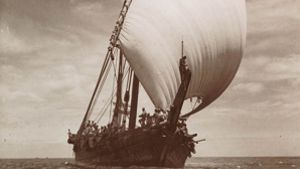
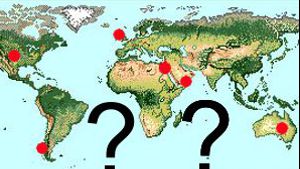
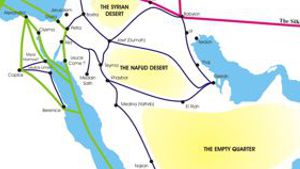
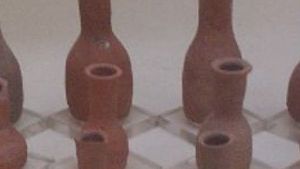
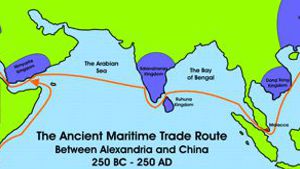
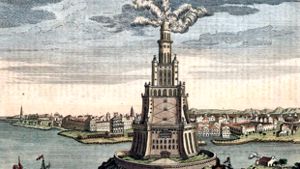




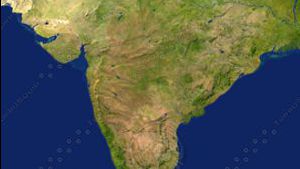


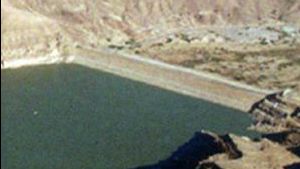
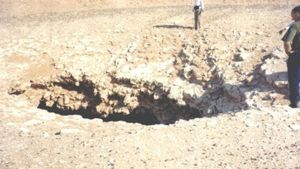

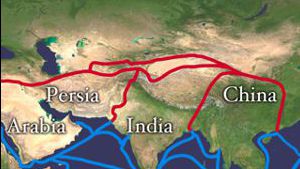
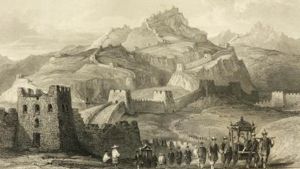

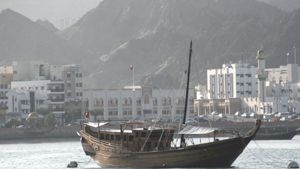

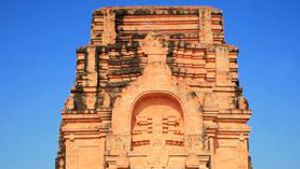

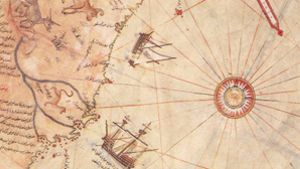
Page Discussion
Membership is required to comment. Membership is free of charge and available to everyone over the age of 16. Just click SignUp, or make a comment below. You will need a user name and a password. The system will automatically send a code to your email address. It should arrive in a few minutes. Enter the code, and you are finished.
Members who post adverts or use inappropriate language or make disrespectful comments will have their membership removed and be barred from the site. By becoming a member you agree to our Terms of Use and our Privacy, Cookies & Ad Policies. Remember that we will never, under any circumstances, sell or give your email address or private information to anyone unless required by law. Please keep your comments on topic. Thanks!